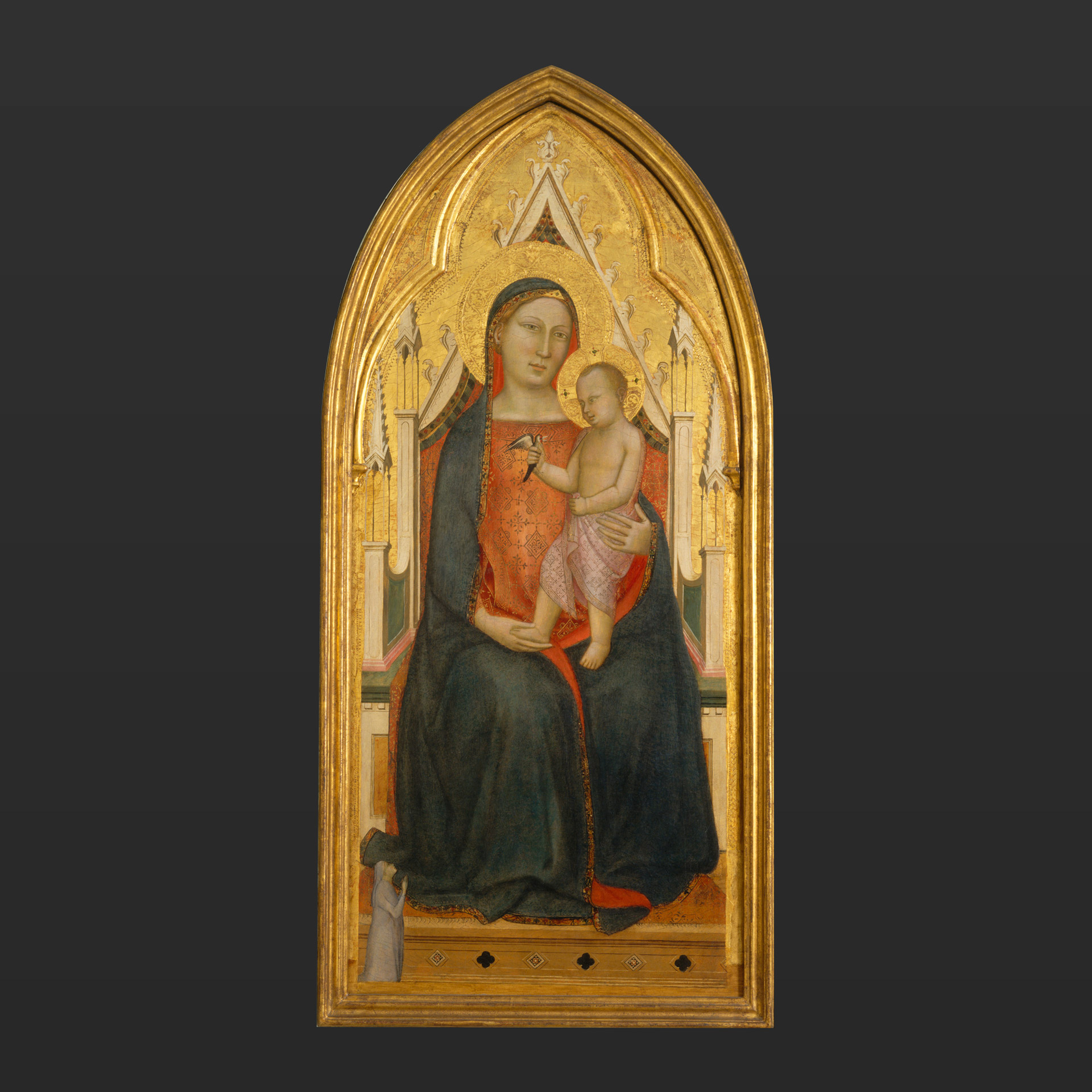Object of the Week: Virgin and Child with Donor
Seattle has been under a smoky haze for days now because of forest fires north, east, and south of us. Ash covered my kitchen table yesterday morning. The sun no longer sparkles—it looks like an opaque orange egg yolk, and its light struggles to get through the smog. If we were in the midwest I would think a tornado was imminent. Meanwhile, on the other side of the continent, Harvey and Irma have battered their way through neighborhoods wielding the weapons of wind and water.
When I was thinking about an object to write about for this unsettling week, I considered atmospheric abstractions; a Dutch painting about an explosion in a gunpowder factory; a hazy landscape. But then I had another thought. These massive climate events make me feel small and helpless. What have people in the past done in the face of such intimidating natural force? They turned to higher powers.
In ancient civilizations people made offerings to the gods. Later, supplications could be made to royalty, once believed to be divinely endowed. But in 14th-century Christian Europe, most prayers were directed heavenward—to God, his son Jesus, the Virgin Mary, or a pantheon of saints, each associated with specific conditions or complaints. Saint Christopher was supposed to protect you if you were traveling; Saint Roch was invoked against the plague; Saint Martin of Tours was the patron of the poor. For protection from bad weather, people turned to the little known Saint Medard.
We don’t have an image of Saint Medard, but we do have an image of a man kneeling in earnest prayer as he gazes up at the Madonna and Child.
The figure is easy to miss because he is so much smaller than the Virgin and Child who are the main subject of the painting, originally the central panel of an altarpiece that he paid to have painted. This man was not asking for deliverance from a momentary crisis such as a flood or fire. He was thinking longer term and bigger picture—specifically, eternal life beyond this brief earthly existence. For him, the Virgin Mary represented solace through her various roles: protective mother, Queen of Heaven, and embodiment of the living Church.
I love this painting, which is currently undergoing conservation and will be back on view in the European galleries by the end of this year. In the past I have always focused on the serene splendor of the Virgin, who remains a loving mother while embodying queenly demeanor. But, feeling small these days in the face of catastrophic world events, I feel a new identification with that tiny donor, praying away for all eternity.
– Chiyo Ishikawa, Susan Brotman Deputy Director for Art and Curator of European Painting and Sculpture
